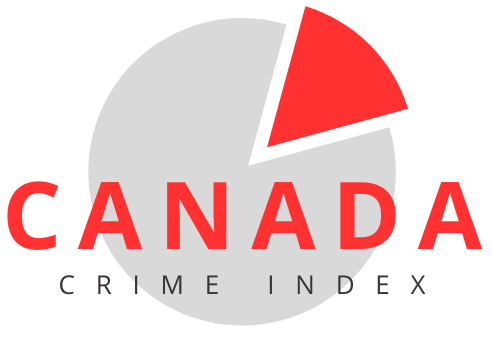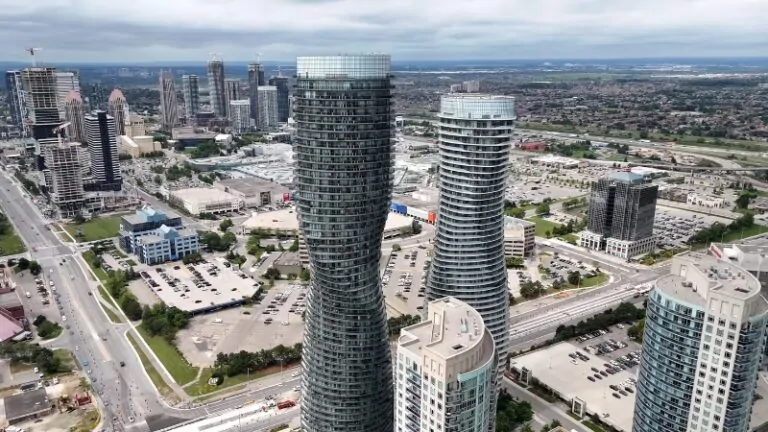Nunavut, Canada’s northernmost territory, presents a unique set of challenges due to its remote geography and harsh climate.
These factors significantly impact the cost of living, making daily life more expensive than in other parts of the country.
Recently, Nunavut minimum wage is currently at $19, the highest in Canada, reflecting the government’s attempt to address these economic pressures.
Let us talk about the Nunavut minimum wage and the reactions it produced.
Minimum Wage in Nunavut – A Double-Edged Sword?
The local government’s decision to raise the minimum wage in Nunavut to $19 per hour is rooted in the desire to help residents cope with the territory’s extraordinarily high cost of living.
The increase reflects the government’s recognition that previous wage levels were insufficient to meet the basic needs of many workers, particularly in an economy where the cost of living is consistently higher than in the rest of Canada.
The reasons for this decision are pointed out in the Nunavut gov report.
- Local businesses
- Workers
- Community organizations
The government aims to provide a wage that better aligns with the cost of living in Nunavut, potentially improving the quality of life for many residents. It is one of the measures that will be implemented in the province.
The long-term strategy is outlined in a report by The Sivummut Economic Development Strategy Group. Even though it was released back in 2003, most of the principles are still ongoing.
The decision also comes with significant concerns about the potential economic ripple effects.
While the Minimum Wage in Nunavut increase is intended to benefit workers, the government acknowledges the challenges it may pose for businesses, particularly small and medium-sized enterprises that already struggle with high operational costs.
Business Reactions and Economic Concerns
Local businesses have expressed a mix of reactions to the minimum wage increase.
While some recognize the need to support workers in a high-cost environment, there is widespread concern about the impact on operational expenses.
Many businesses, especially those in the retail and service sectors, operate on thin margins and fear that higher wages could force them to raise prices, reduce staff hours, or even lay off workers.
These concerns are particularly acute in Nunavut, where businesses already face high overhead costs due to transportation, heating, and supply chain challenges.
Some business owners worry that the wage increase could lead to a vicious cycle where higher operational costs lead to increased prices for goods and services, further exacerbating the cost of living for all residents.
There is concern that the wage hike could deter new businesses from setting up in Nunavut, potentially stifling economic growth and reducing job opportunities in the long run.
Daily Life on $19 an Hour
For Nunavut minimum wage earners, balancing income and expenses is a daily struggle. Even with the $19 minimum wage, many workers find it challenging to cover the high costs of basic needs.
A typical budget for a minimum wage earner might include rent, utilities, groceries, and transportation, with little left over for savings or discretionary spending.
Housing alone can consume a significant portion of income, with rent often exceeding $2,000 per month in some communities.
According to ZipRecruiter: Currently, the average salary in Nunavut is $57,871
If you take a look at cities, the situation is like this:
| City | Annual Salary | Monthly Pay | Weekly Pay | Hourly Wage |
|---|---|---|---|---|
| Arctic Bay | $70,875 | $5,906 | $1,362 | $34.07 |
| Gjoa Haven | $66,034 | $5,502 | $1,269 | $31.75 |
| Kugluktuk | $61,184 | $5,098 | $1,176 | $29.42 |
| Pangnirtung | $60,781 | $5,065 | $1,168 | $29.22 |
| Iqaluit | $58,951 | $4,912 | $1,133 | $28.34 |
| Rankin Inlet | $54,810 | $4,567 | $1,054 | $26.35 |
| Clyde River | $40,788 | $3,399 | $784 | $19.61 |
Utilities, including heating and electricity, can add hundreds of dollars to monthly expenses, particularly during the long, cold winters.
Food costs are another major burden, with the price of fresh produce and meat far exceeding that of other Canadian regions.
Transportation, whether it’s the cost of maintaining a vehicle in harsh conditions or the expense of air travel between communities, further strains budgets.
For many, the reality is that the $19 minimum pay, while an improvement, is still insufficient to fully meet the demands of living in Nunavut.
Interesting Fact: One of the good news we’ve got recently is that the government employees in Nunavut will get a 9% increase.
Food Security and Health Implications
The high cost of living in Nunavut has direct implications for food security and health. Even with a higher Nunavut minimum wage, access to nutritious food remains a significant challenge for many residents.
The cost of fresh fruits, vegetables, and protein-rich foods is often prohibitively high, forcing many to rely on cheaper, less nutritious options.
- 57% in Nunavut (compared to 52.3% in 2015–2016);
- 21.6% in the Northwest Territories (compared to 20.3% in 2015–2016); and
- 16.9% in Yukon (where data were not collected in 2015–2016).
It can lead to a range of health issues, including malnutrition, obesity, and related chronic conditions such as diabetes and heart disease.
In remote communities, where traditional hunting and gathering practices are still common, the rising costs of fuel, equipment, and supplies have made these practices increasingly unaffordable, further limiting access to healthy food.
For many residents, the increase of minimum wage in Nunavut, while welcome, does not fully address the underlying issues that contribute to poor health outcomes in the territory.
The Reality of Living Costs in Nunavut
Living in Nunavut is unlike living anywhere else in Canada.
The costs of necessities such as housing, food, utilities, and transportation are significantly higher due to the territory’s isolated location and extreme weather conditions.
Housing, for example, is a major expense, with the cost of building and maintaining homes skyrocketing because of the logistical challenges of transporting materials to remote communities.
In 2022, the local gov came up with a budget to resolve the housing crisis, which was at around $2.5 billion.
Food prices are often two to three times higher than in southern Canada, primarily due to the reliance on air freight to deliver perishable goods.
Utilities, particularly heating, are also a substantial burden given the extreme cold, with residents often paying double or triple what they would in other parts of the country.
Fortunately, an energy strategy was created to resolve these issues in Nunavut, Yukon, and Northwest Territories by 2030.
Transportation costs further add to the financial strain, as the lack of road access to many communities means that air travel is often the only option, and it comes at a premium.
Supply Chain and Accessibility Issues
The challenges of living in Nunavut are compounded by severe supply chain and accessibility issues.
The territory’s limited infrastructure, including its sparse road network and reliance on seasonal sea routes, exacerbates the already high cost of living.
Add to that the increasing troubles caused by climate change. Canadian Climate Institute released a large report on how to tackle these problems back in 2022.
Goods must often be flown in, driving up prices due to the high cost of air freight. The situation is further complicated by weather-related disruptions, which can delay shipments and create shortages of essential items, pushing prices even higher.
These challenges mean that even basic goods, such as fresh produce, dairy, and meat, are often prohibitively expensive.
Nunavut News reported that the price needed to bridge the infrastructure gap in the province is around $349 billion.
The lack of competition among suppliers also plays a role, as the few businesses that operate in the region can set prices with little fear of undercutting by competitors.
The environment creates a cycle of high costs that are passed on to consumers, making it difficult for many residents to afford even the basics.
Broader Economic Implications
The increase of minimum wage in Nunavut is likely to have significant implications for social assistance and government programs.
- Yukon – $17.59
- Northwest Territories – $16.05
Now, let us take a look at the rest of them:
- Alberta – $15.00
- British Columbia – $17.40
- Manitoba – $15.30
- Ontario – $16.55
- Quebec – $15.75
- Saskatchewan – $14.00
- Prince Edward Island – $15.40
- Nova Scotia – $15.20
- New Brunswick – $15.30
- Newfoundland & Labrador – $15.60
On one hand, higher wages could reduce dependency on social assistance by enabling more residents to achieve a basic standard of living through their employment.
It could lead to a decrease in the number of people relying on government programs such as income support, potentially allowing the government to reallocate resources to other areas of need.
There is also a risk that the wage increase could lead to unintended consequences, such as reductions in eligibility for certain social programs, leaving some residents worse off than before.
The higher cost of living driven by wage increases could place additional strain on government budgets, particularly in areas such as:
- Healthcare
- Housing
- Social services
The long-term sustainability of the wage increase is also a concern, as it remains unclear whether the benefits of higher wages will outweigh the potential economic and social costs.
Long-Term Economic Sustainability
The long-term economic sustainability of minimum wage in Nunavut increase is a subject of considerable debate.
For example, higher wages could lead to increased costs for businesses, potentially stifling economic growth and reducing job opportunities in the territory.
There is also the risk that the wage increase could lead to inflationary pressures, further driving up the cost of living and eroding the purchasing power of residents. Not to mention that it simply isn’t enough.
To mitigate these risks, some experts have suggested that the government consider complementary measures, such as tax incentives or subsidies, to support businesses and workers in the transition to a higher wage environment.
There is a need for long-term investment in infrastructure and economic development to create a more sustainable and diversified economy in Nunavut.
Without these additional measures, the wage increase alone may not be sufficient to address the deep-rooted economic challenges facing the territory.
Final Reflections
Minimum wage in Nunavut is a significant step towards addressing the territory’s high cost of living, but it isnt enough.
However, it also brings a complex set of challenges for workers, businesses, and the broader economy.
While the wage increase provides some relief, it may not be sufficient on its own to create a truly livable wage in such a remote and costly environment.
















